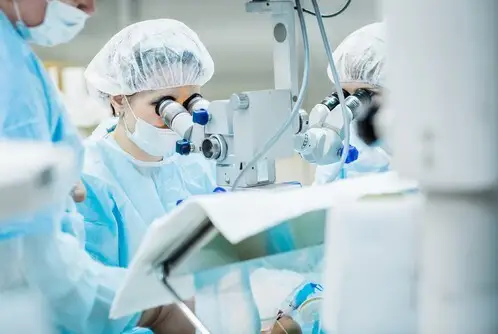BIOMEDICAL

Optics plays a vital role in the field of biomedical sciences, revolutionizing diagnostics, imaging, therapy, and research. The unique properties of light allow for non-invasive and precise analysis of biological systems at various scales, enabling advancements in healthcare and understanding of complex biological processes. Here are some key areas where optics is extensively utilized in biomedical applications:
Medical Imaging: Optics-based imaging techniques such as microscopy, endoscopy, and optical coherence tomography (OCT) provide detailed visualization of biological tissues and cellular structures. These non-invasive imaging modalities aid in early disease detection, treatment planning, and monitoring of therapeutic outcomes.
Spectroscopy and Biophotonics: Spectroscopic techniques, such as fluorescence spectroscopy, Raman spectroscopy, and diffuse reflectance spectroscopy, utilize optics to study molecular composition, tissue characteristics, and metabolic processes. Biophotonics combines optics with biology to investigate interactions between light and biological materials, leading to advancements in genomics, proteomics, and drug discovery.
Optical Sensors and Probes: Optical sensors and probes are employed for monitoring vital signs, analyzing biomarkers, and assessing physiological parameters. Optics enables the development of biosensors, fiber-optic probes, and wearable devices that provide real-time, non-invasive measurements for diagnostics and patient monitoring.
Laser Therapy and Surgery: Laser-based techniques, such as laser ablation, photodynamic therapy, and laser-assisted surgery, utilize optics to precisely target and treat diseases, tumors, and various medical conditions. Optics enables the delivery of controlled and localized energy for therapeutic purposes.
Optogenetics and Neuroimaging: Optics is instrumental in optogenetics, a technique that uses light to control and manipulate genetically modified cells in living organisms. Optogenetics allows researchers to study neural circuits, brain function, and behavior. Optical imaging techniques, such as functional near-infrared spectroscopy (fNIRS) and fluorescence imaging, aid in non-invasive neuroimaging, providing insights into brain activity and disorders.
Lab-on-a-Chip and Point-of-Care Diagnostics: Optics-based technologies are integrated into lab-on-a-chip systems and point-of-care diagnostic devices. These miniaturized and portable systems enable rapid and sensitive analysis of biological samples, facilitating early disease detection, monitoring, and personalized medicine.